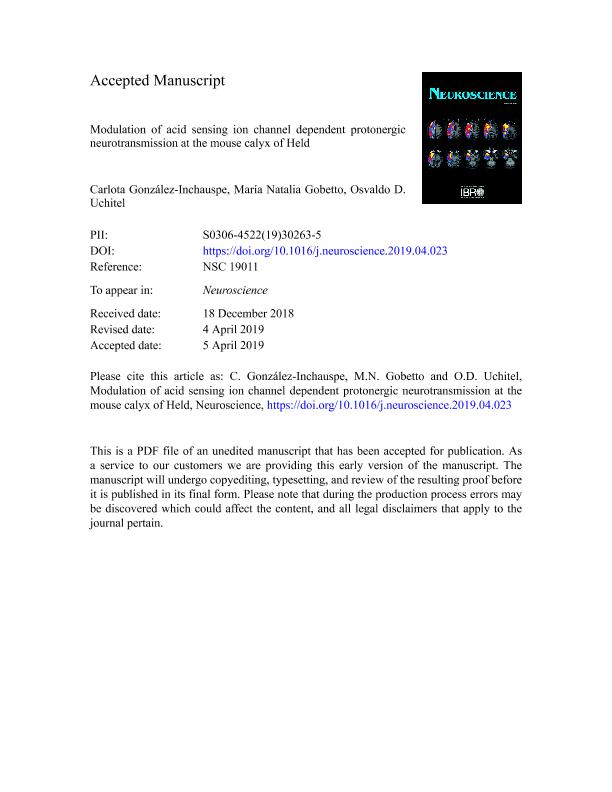Artículo
Modulation of acid sensing ion channel dependent protonergic neurotransmission at the mouse calyx of Held
Fecha de publicación:
07/2020
Editorial:
Pergamon-Elsevier Science Ltd
Revista:
Neuroscience
ISSN:
0306-4522
Idioma:
Inglés
Tipo de recurso:
Artículo publicado
Clasificación temática:
Resumen
Acid-sensing ion channels (ASICs) regulate synaptic activities and play important roles in neurodegenerative diseases. It has been reported that homomeric ASIC-1a channels are expressed in neurons of the medial nucleus of the trapezoid body (MNTB) of the auditory system in the CNS. During synaptic transmission, acidification of the synaptic cleft presumably due to the co-release of neurotransmitter and H+ from synaptic vesicles activates postsynaptic ASIC-1a channels in mice up to 3 weeks old. This generates synaptic currents (ASIC1a-SCs) that add to the glutamatergic excitatory postsynaptic currents (EPSCs). Here we report that neuromodulators like histamine and natural products like lactate and spermine potentiate ASIC1a-SCs in an additive form such that excitatory ASIC synaptic currents as well as the associated calcium influx become significantly large and physiologically relevant. We show that ASIC1a-SCs enhanced by endogenous neuromodulators are capable of supporting synaptic transmission in the absence of glutamatergic EPSCs. Furthermore, at high frequency stimulation (HFS), ASIC1a-SCs contribute to diminish short term depression (STD) and their contribution is even more relevant at early stages of development. Since ASIC channels are present in almost all type of neurons and synaptic vesicles content is acid, the participation of protons in synaptic transmission and its potentiation by endogenous substances could be a general phenomenon across the central nervous system.
Archivos asociados
Licencia
Identificadores
Colecciones
Articulos(IFIBYNE)
Articulos de INST.DE FISIOL., BIOL.MOLECULAR Y NEUROCIENCIAS
Articulos de INST.DE FISIOL., BIOL.MOLECULAR Y NEUROCIENCIAS
Citación
González Inchauspe, Carlota María Fabiola; Gobetto, María Natalia; Uchitel, Osvaldo Daniel; Modulation of acid sensing ion channel dependent protonergic neurotransmission at the mouse calyx of Held; Pergamon-Elsevier Science Ltd; Neuroscience; 439; 7-2020; 195-210
Compartir
Altmétricas




